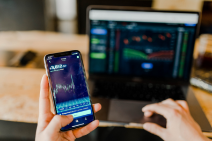How much is your identity worth?
Do you know how vulnerable our identity is in this modern world, under the impact of Deepfake technology, AI or quantum computing?

A survey conducted by Vietnam’s National Cybersecurity Association in December 2024 showed one in every 220 smartphone users faced online scams. Vietnamese lost a total of VND18.9 trillion, equivalent to US$744 million, in 2024 due to this cyber fraud. According to Global Initiative, Vietnam in 2023 experienced the highest increase in deepfake fraud in Asia Pacific (25.3%), followed by Japan (23.4%).
In this modern and highly technology-applied world, we share our personal data on many platforms to open a bank account, create a social media account, register for an online course or a website’s membership, or even to entertain ourselves with video editing or photo retouching apps. When our data is exposed online, it’s time to ask how it should be protected.
How can banks protect their customers?
With 87% of Vietnamese adults having bank accounts and approximately 95% of transactions conducted via online channels, how banks can protect their customers’ personal data has become more important than ever. Biometrics, which has been prioritized as a security gate in Vietnam, remains one of the most advanced authentication tools nowadays to prevent AI-driven fraud attempts. However, while enhancing security, biometrics can be counterfeited to deceive systems due to the lack of behavioral biometrics. Additionally, different systems may not be able to integrate, causing security gaps, while poor encryption and centralized storage heighten the potential for data leakage during breaches.
Currently, banks in Vietnam are implementing a multi-faceted approach. Investment in advanced AI and machine learning algorithms is crucial for real-time detection of deepfake anomalies. Some people may associate banks with conservative concepts; however, banks have kept investing in innovative infrastructure and new authentication services for years. Banks also embrace the comprehensive security strategy, including establishing partnerships with cybersecurity firms providing comprehensive training programs for banking staff, as well as public awareness campaigns for customers on the risks associated with biometric data.
Another key factor for banks to build up their robust defense systems is strong policies and regulations that guide the ethical and secure use of biometric data.
This is where we can ask for collaborative efforts between authorities, banks, and tech providers. This partnership should focus on creating unified standards for biometric data collection and authentication processes to ensure compatibility and security across platforms. Policymaking is a crucial support, with the State Bank of Vietnam and the Ministry of Public Security playing key roles in developing clear legal frameworks that protect user data and privacy while enhancing biometric identity infrastructure for multi-layer authentication. Additionally, seamless integration of biometric technology into existing banking systems will enable the ease of use and security.

And finally, a Vietnam Biometric Trust Network can serve as a secure hub for data sharing and standardization among banks and regulators.
And how can you protect yourselves?
Banks have taken several actions to protect their data and customers’ data from any cyberthreats in this digital age. However, the best ones who can protect your data, your identity, is you. We are warned that deepfake technology continues to be upgraded quickly in 2025, meaning that it’s more difficult to distinguish real and fake content and therefore easier for our biometric data to be spoofed. Thus, banks like HSBC have always kept alerting customers to absolutely not transfer money when threatened, click or share personal information on any suspicious platforms or strange persons, and never share OTP, CVV to anyone including bank staff.
As cybercriminals’ tactics increasingly advance, always be vigilant with your personal data once it’s online. Regularly updating your passwords and using multi-factor authentication can create an extra layer of security. And lastly, do not stop updating yourselves with new fraudulent trends.
Innovative technology has provided us with more convenience and better experience. But, the cyber risks are around us. Banks have responsibility to upgrade their system, improve their customer experience simultaneously protect their data and assets. Whilst, every individual should also be responsible with their own personal data as it’s priceless.








